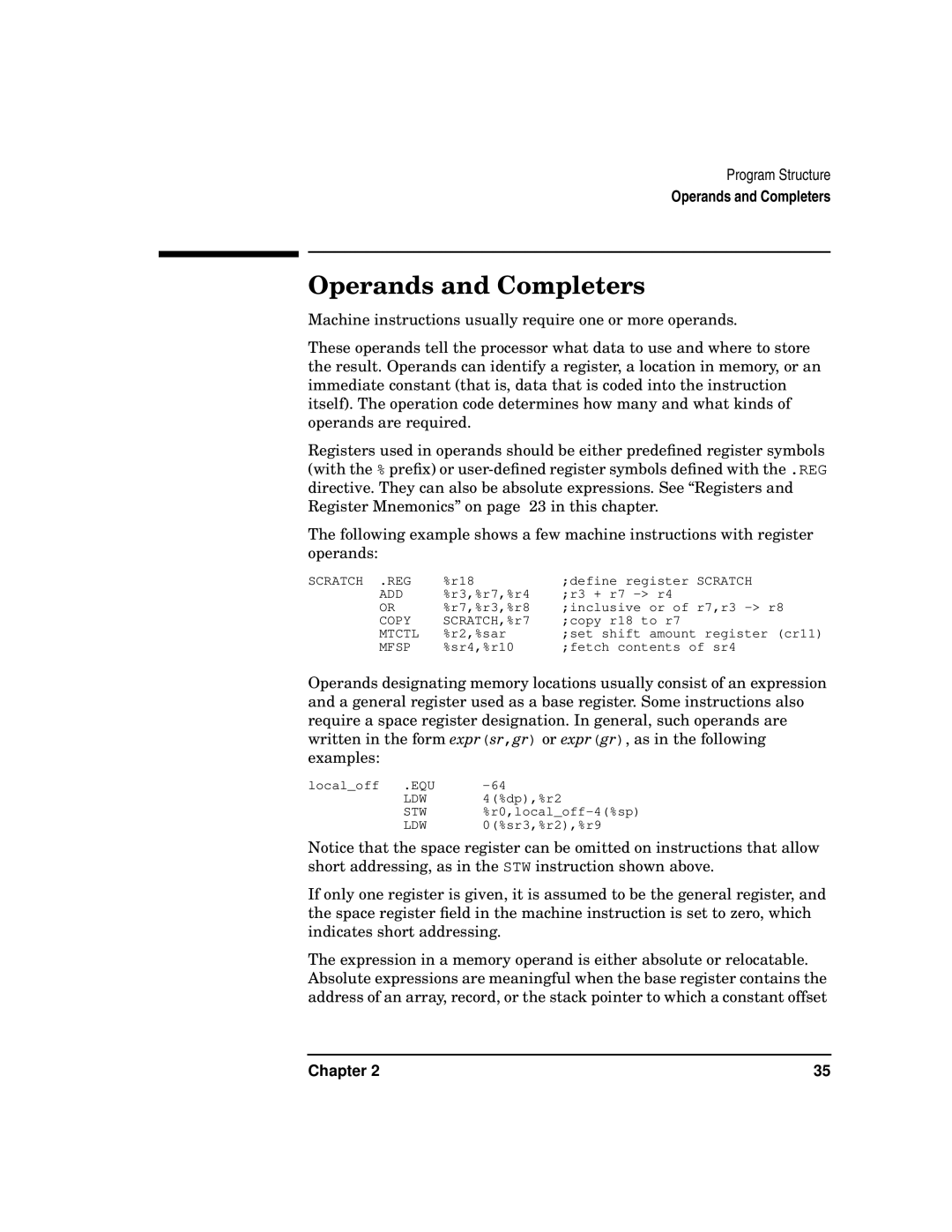
Program Structure
Operands and Completers
Operands and Completers
Machine instructions usually require one or more operands.
These operands tell the processor what data to use and where to store the result. Operands can identify a register, a location in memory, or an immediate constant (that is, data that is coded into the instruction itself). The operation code determines how many and what kinds of operands are required.
Registers used in operands should be either predefined register symbols (with the % prefix) or
The following example shows a few machine instructions with register operands:
SCRATCH .REG | %r18 | ;define register SCRATCH |
ADD | %r3,%r7,%r4 | ;r3 + r7 |
OR | %r7,%r3,%r8 | ;inclusive or of r7,r3 |
COPY | SCRATCH,%r7 | ;copy r18 to r7 |
MTCTL | %r2,%sar | ;set shift amount register (cr11) |
MFSP | %sr4,%r10 | ;fetch contents of sr4 |
Operands designating memory locations usually consist of an expression and a general register used as a base register. Some instructions also require a space register designation. In general, such operands are written in the form expr(sr,gr) or expr(gr), as in the following examples:
local_off | .EQU | |
| LDW | 4(%dp),%r2 |
| STW | |
| LDW | 0(%sr3,%r2),%r9 |
Notice that the space register can be omitted on instructions that allow short addressing, as in the STW instruction shown above.
If only one register is given, it is assumed to be the general register, and the space register field in the machine instruction is set to zero, which indicates short addressing.
The expression in a memory operand is either absolute or relocatable. Absolute expressions are meaningful when the base register contains the address of an array, record, or the stack pointer to which a constant offset
Chapter 2 | 35 |
